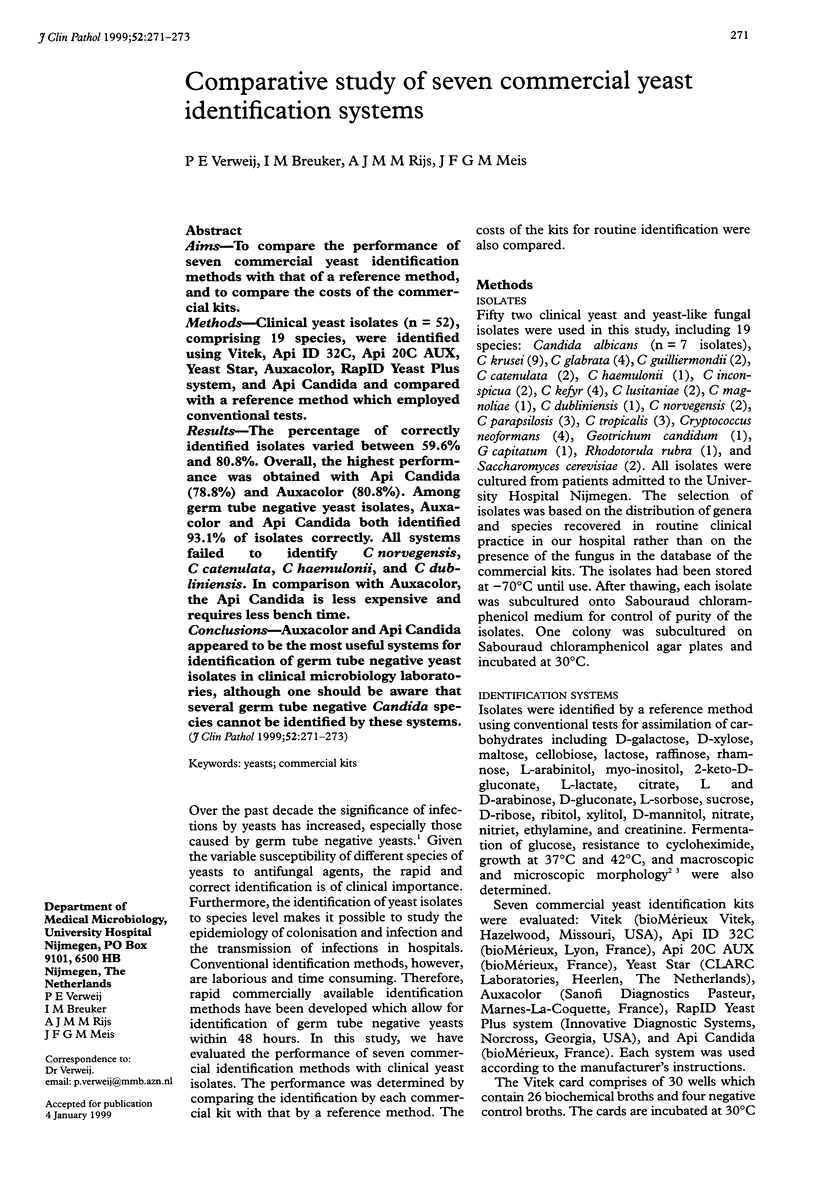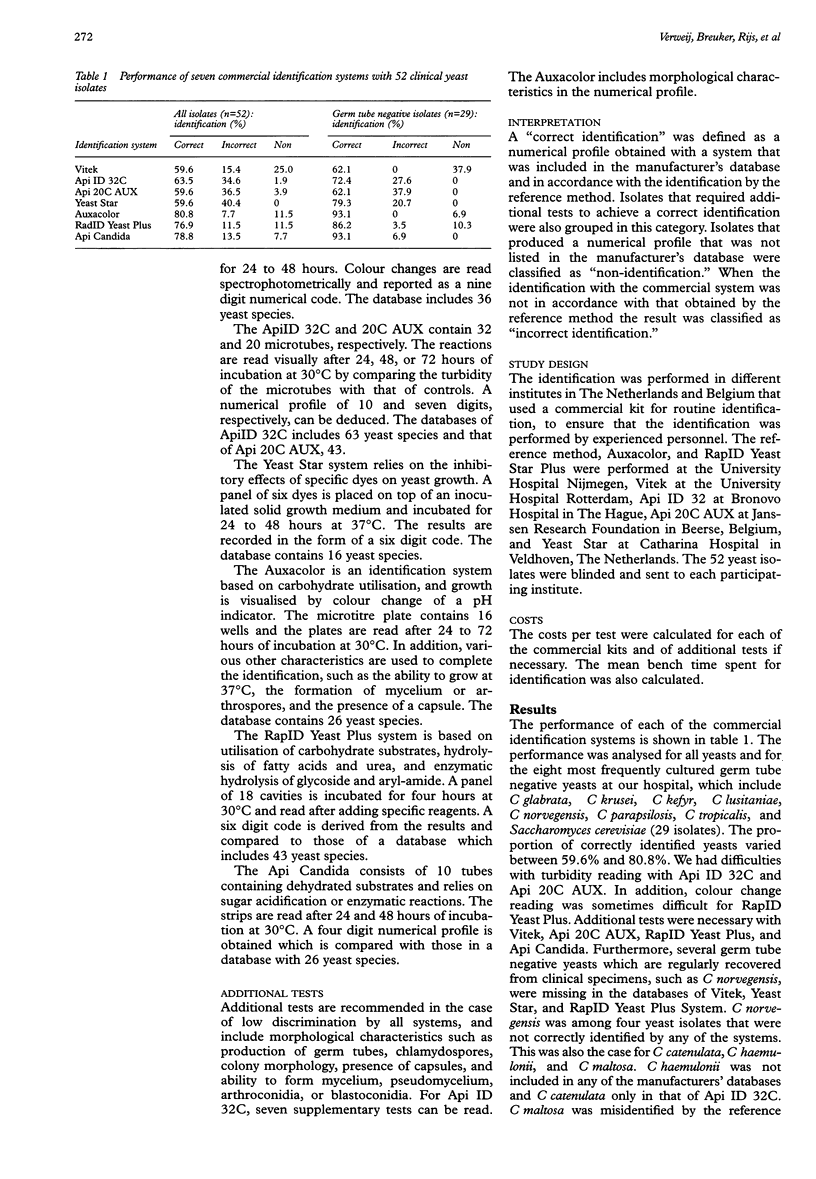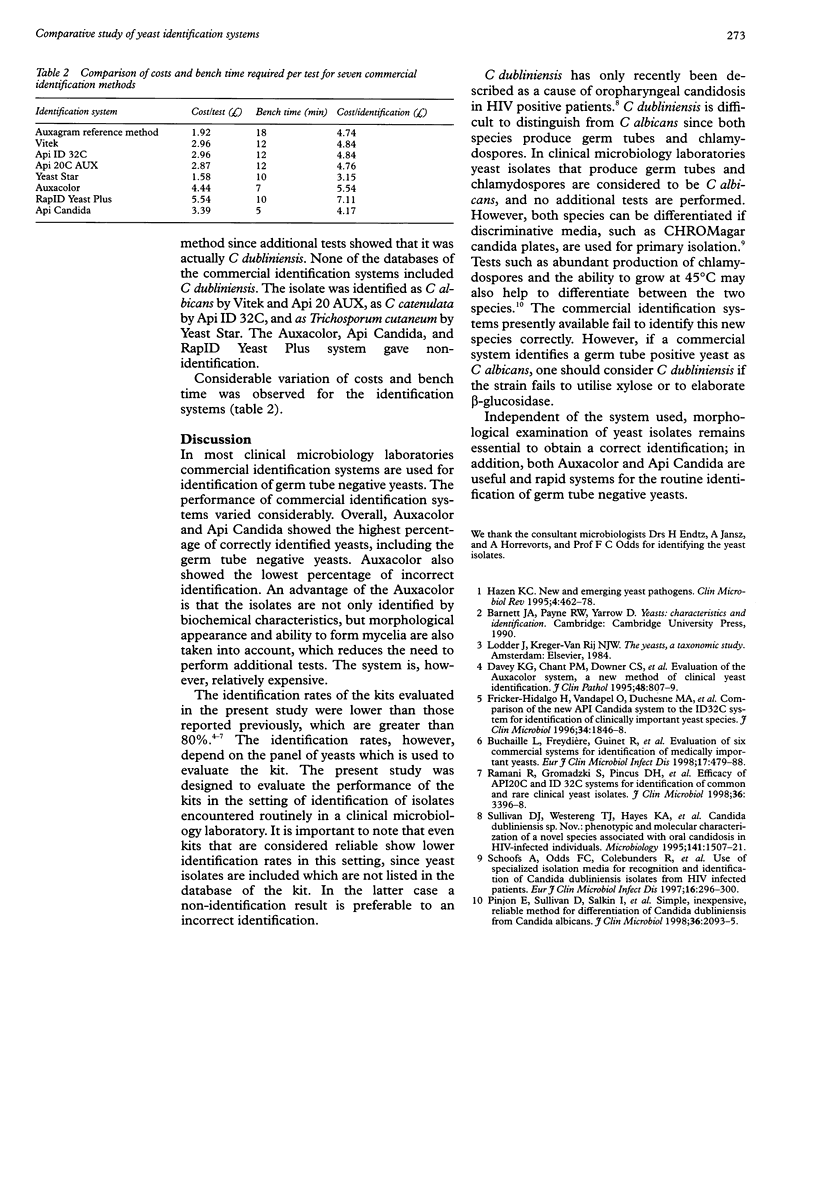Abstract
AIMS: To compare the performance of seven commercial yeast identification methods with that of a reference method, and to compare the costs of the commercial kits. METHODS: Clinical yeast isolates (n = 52), comprising 19 species, were identified using Vitek, Api ID 32C, Api 20C AUX, Yeast Star, Auxacolor, RapID Yeast Plus system, and Api Candida and compared with a reference method which employed conventional tests. RESULTS: The percentage of correctly identified isolates varied between 59.6% and 80.8%. Overall, the highest performance was obtained with Api Candida (78.8%) and Auxacolor (80.8%). Among germ tube negative yeast isolates, Auxacolor and Api Candida both identified 93.1% of isolates correctly. All systems failed to identify C norvegensis, C catenulata, C haemulonii, and C dubliniensis. In comparison with Auxacolor, the Api Candida is less expensive and requires less bench time. CONCLUSIONS: Auxacolor and Api Candida appeared to be the most useful systems for identification of germ tube negative yeast isolates in clinical microbiology laboratories, although one should be aware that several germ tube negative Candida species cannot be identified by these systems.
Full text
PDF


Selected References
These references are in PubMed. This may not be the complete list of references from this article.
- Buchaille L., Freydière A. M., Guinet R., Gille Y. Evaluation of six commercial systems for identification of medically important yeasts. Eur J Clin Microbiol Infect Dis. 1998 Jul;17(7):479–488. doi: 10.1007/BF01691130. [DOI] [PubMed] [Google Scholar]
- Davey K. G., Chant P. M., Downer C. S., Campbell C. K., Warnock D. W. Evaluation of the AUXACOLOR system, a new method of clinical yeast identification. J Clin Pathol. 1995 Sep;48(9):807–809. doi: 10.1136/jcp.48.9.807. [DOI] [PMC free article] [PubMed] [Google Scholar]
- Fricker-Hidalgo H., Vandapel O., Duchesne M. A., Mazoyer M. A., Monget D., Lardy B., Lebeau B., Freney J., Ambroise-Thomas P., Grillot R. Comparison of the new API Candida system to the ID 32C system for identification of clinically important yeast species. J Clin Microbiol. 1996 Jul;34(7):1846–1848. doi: 10.1128/jcm.34.7.1846-1848.1996. [DOI] [PMC free article] [PubMed] [Google Scholar]
- Hazen K. C. New and emerging yeast pathogens. Clin Microbiol Rev. 1995 Oct;8(4):462–478. doi: 10.1128/cmr.8.4.462. [DOI] [PMC free article] [PubMed] [Google Scholar]
- Pinjon E., Sullivan D., Salkin I., Shanley D., Coleman D. Simple, inexpensive, reliable method for differentiation of Candida dubliniensis from Candida albicans. J Clin Microbiol. 1998 Jul;36(7):2093–2095. doi: 10.1128/jcm.36.7.2093-2095.1998. [DOI] [PMC free article] [PubMed] [Google Scholar]
- Ramani R., Gromadzki S., Pincus D. H., Salkin I. F., Chaturvedi V. Efficacy of API 20C and ID 32C systems for identification of common and rare clinical yeast isolates. J Clin Microbiol. 1998 Nov;36(11):3396–3398. doi: 10.1128/jcm.36.11.3396-3398.1998. [DOI] [PMC free article] [PubMed] [Google Scholar]
- Schoofs A., Odds F. C., Colebunders R., Ieven M., Goossens H. Use of specialised isolation media for recognition and identification of Candida dubliniensis isolates from HIV-infected patients. Eur J Clin Microbiol Infect Dis. 1997 Apr;16(4):296–300. doi: 10.1007/BF01695634. [DOI] [PubMed] [Google Scholar]
- Sullivan D. J., Westerneng T. J., Haynes K. A., Bennett D. E., Coleman D. C. Candida dubliniensis sp. nov.: phenotypic and molecular characterization of a novel species associated with oral candidosis in HIV-infected individuals. Microbiology. 1995 Jul;141(Pt 7):1507–1521. doi: 10.1099/13500872-141-7-1507. [DOI] [PubMed] [Google Scholar]


